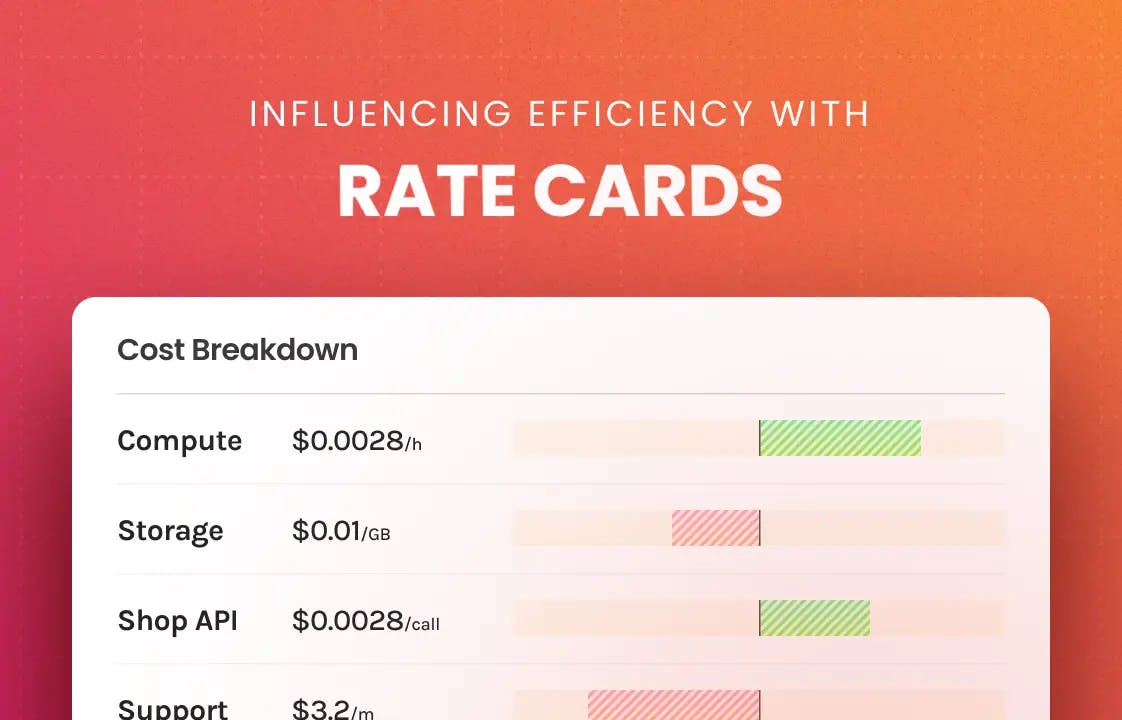
FinOps unit economics is a practical framework for attributing cloud costs to internal teams and customers while increasing the understanding of shared cost and profit margins. When a company introduces unit cost or rate cards, consumer teams inevitably compare internal rates to similar managed services provided by external vendors. Such comparisons often raise questions about the cost discrepancies between internal solutions and their external counterparts, such as AWS Aurora Serverless versus an internal MySQL cluster.
These differences usually stem from the additional value internal solutions provide, including higher Service Level Agreements (SLAs), enhanced security measures, and an improved developer experience, which justifies the higher costs. However, instances where internal rates exceed those of external services for comparable capabilities often point to an issue of efficiency-related technology debt. This article will discuss practices to handle inefficiencies in unit economics and rate cards.
Setting Rate Cards
The primary goal of establishing rate cards is to define a fixed internal pricing model for services rendered by various teams, such as database storage costs per gigabyte or the expense of running a Kubernetes Pod per hour. Rate cards empower teams to plan their future architecture and prioritize efficiency improvements strategically. Rate cards can and will differ from the actual unit cost derived from service usage and cost, which continuously changes throughout the day.
It's a common practice to set rate cards for the next 6-12 months based on historical average unit cost. This works until you don't do re-architecture or efficiency work that will change service costs and make rate cards obsolete.
Imagine you're an internal database team that provides a managed MySQL service to other service and product teams. You set the rate card based on the service's historical usage and cost. Your average unit cost for storage per gigabyte per month is $0.15. You also set the rate card at $0.15 for the next 12 months so consumer teams can design future architecture with it in mind while finance can make forecasting and budgeting with it. Remember that rate cards shouldn't generate a profit but should cover the cost of running the service, including control plane, storage, and operational overhead. When rate cards cover the cost well, the consumer or the provider team will stay within budget.
Influencing Behavior with Rate Cards
Rate cards can be a strategic tool for influencing behavior across consumer and producer teams within an organization. By proactively incorporating the cost of future efficiency improvements or increasing rates for deprecated APIs, organizations can drive the adoption of best practices and focus on efficiency. A counterintuitive yet effective approach involves lowering rate cards before the efficiency gains, creating a financial incentive for provider teams to meet new efficiency targets. This strategy necessitates clear timelines for new rates, ensuring teams are committed to achieving the desired outcomes.
Which team should carry the budget for reserved capacity?
Another exciting topic when it comes to setting rate cards is reserved capacity. Internal teams providing services on shared infrastructure like Kubernetes must keep some extra capacity around to serve traffic spikes and ensure high availability. It's advisable to include reserved capacity in rate cards as long as they are in the industry standard range. At the same time, excessive reserves often indicate technology debt which should be excluded from long-term financial planning and, with this, from rate cards. This approach encourages internal service providers to address inefficiency and technology debt, aligning their operational goals with the organization's financial strategies.
Summary
Unit economics helps manage shared cloud costs and promote organizational efficiency. By artificially adjusting rate cards, we can balance the pricing of internal services and incentive best practices, fostering a culture of continuous improvement and financial accountability. Unit economics and rate cards can ensure that engineering efforts align with strategic business objectives and drive sustainable growth.


